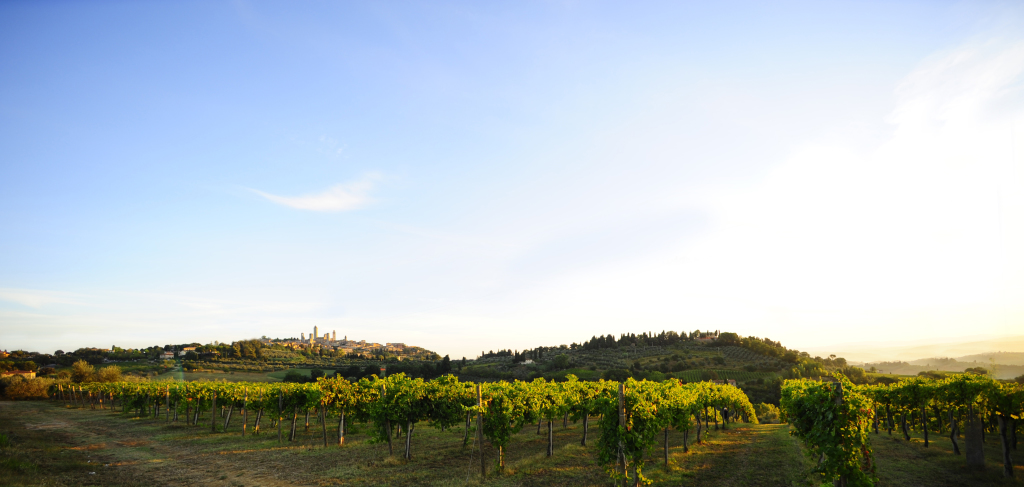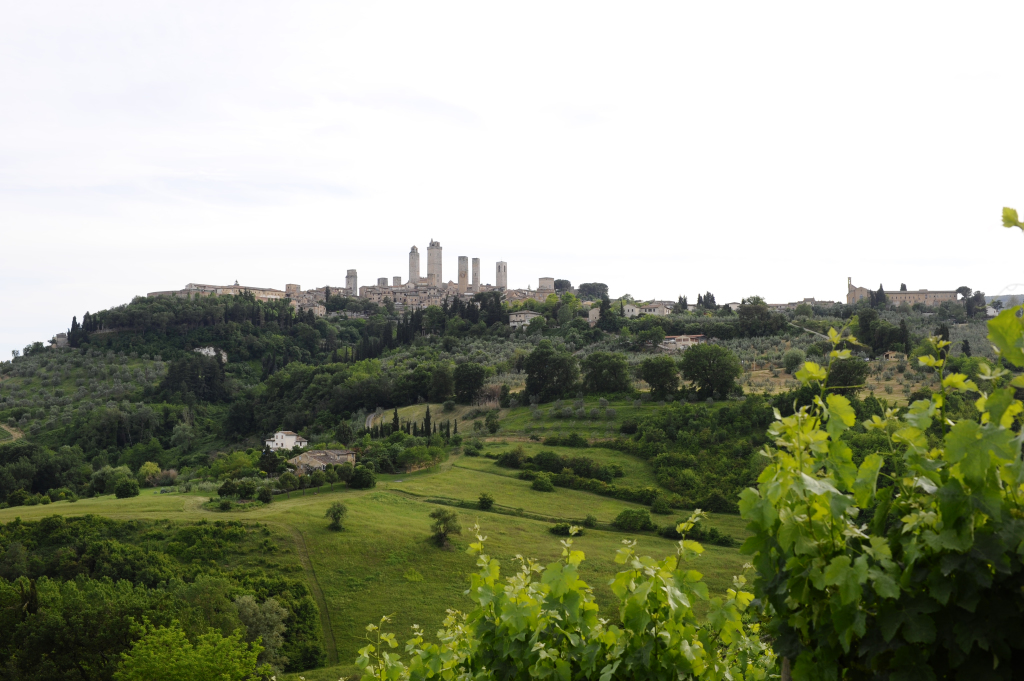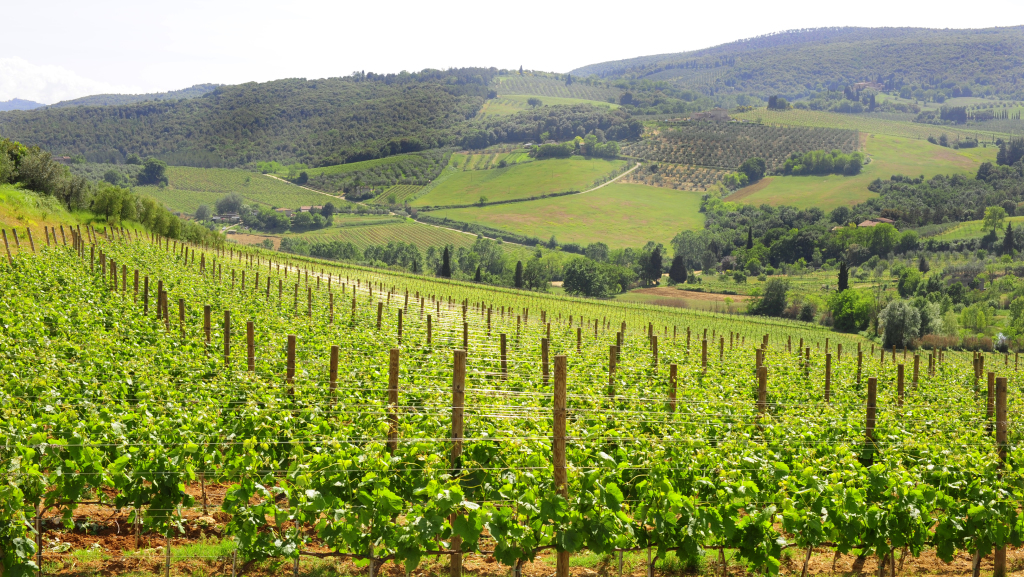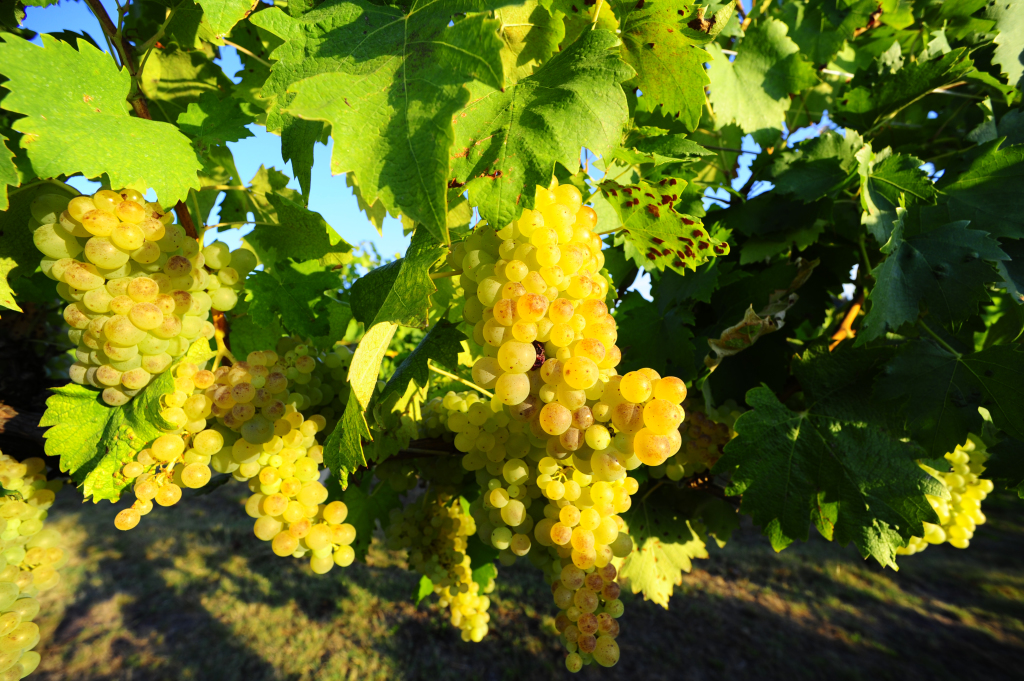 No Italian wine can boast a history that dates back centuries like Vernaccia di San Gimignano. At the end of the Thirteenth century, it appeared throughout Europe on the tables of kings, popes and wealthy merchants. It is highly likely that the name Vernaccia comes from Vernazza, where wines from Liguria were embarked. And Vernaccia was the most exclusive and precious of these wines.
No Italian wine can boast a history that dates back centuries like Vernaccia di San Gimignano. At the end of the Thirteenth century, it appeared throughout Europe on the tables of kings, popes and wealthy merchants. It is highly likely that the name Vernaccia comes from Vernazza, where wines from Liguria were embarked. And Vernaccia was the most exclusive and precious of these wines.
According to the Regulations for the production of Vernaccia di San Gimignano wine, the only designated area is the municipal territory of San Gimignano and the wine must be made from vineyards with at least 85% Vernaccia di San Gimignano, allowing for a maximum presence of 15% of other non-aromatic white grape varieties, suited to cultivation in the Tuscany Region. The use of the following grape varieties is not allowed: Traminer, Muller Turgau, Moscato Bianco, Malvasia di Candia, Malvasia Istriana, Incrocio Bruni 54. Sauvignon and Riesling may be included for a maximum (either alone or together) of 10%.
The best grapes selected are used to make Vernaccia di San Gimignano Riserva, for which a minimum ageing period of 11 months in the cellar (in steel or wood) is envisaged, followed by at least 3 months of bottle ageing before release for sale. The yield per hectare must not exceed 9,000 kg. The grapes must be vinified and the wine aged within the production area.
San Gimignano
 The territory of the production of the Denominations protected falls entirely within the Municipality of San Gimignano, in the northwest part of the province of Siena, in the heart of Tuscany. It is a territory situated completely on hills at altitudes between 200 and 400 m above sea level characterised by a Mediterranean climate with rather dry summers, not particularly harsh winters and rainfall concentrated in two periods: April/May and November, with temperatures varying from -5°C to +37°C.
The territory of the production of the Denominations protected falls entirely within the Municipality of San Gimignano, in the northwest part of the province of Siena, in the heart of Tuscany. It is a territory situated completely on hills at altitudes between 200 and 400 m above sea level characterised by a Mediterranean climate with rather dry summers, not particularly harsh winters and rainfall concentrated in two periods: April/May and November, with temperatures varying from -5°C to +37°C.
The area benefits from good ventilation all year round and only rarely is it cloaked in fog.
The production
The estates registered in the roll of producers of Vernaccia di San Gimignano in 2013 totalled 172 and this number has been stable over the years. Vineyards registered for the production of Vernaccia di San Gimignano occupy an area of almost 800 hectares.
 The average annual production is around 5,800 tonnes of grapes, equating to about 40,000 hectolitres, for an average annual production of 5 million bottles of Vernaccia di San Gimignano.
The average annual production is around 5,800 tonnes of grapes, equating to about 40,000 hectolitres, for an average annual production of 5 million bottles of Vernaccia di San Gimignano.
The percentage of Vernaccia di San Gimignano destined for export is 40%. The leading markets are, in order of importance: Germany, USA, the Netherlands, Belgium, Japan, Switzerland, United Kingdom, Denmark, China and Canada.
Of the 60% destined to the Italian market, about 40% is sold in the San Gimignano area (in local restaurants and through the direct sale channel on the estates and in estate wine shops in the centre of San Gimignano), 30% in Tuscany and the remaining 30% in the rest of Italy.
The Consortium
The Consortium of Vernaccia di San Gimignano, later named “Consorzio della Denominazione San Gimignano”, was established in 1972 for the correct management of the denomination of origin of Vernaccia di San Gimignano, the first Italian wine to attain this recognition, in 1966.
To achieve a constant general qualitative improvement in the production of both grapes and wine, the Consortium organises constant refresher courses aimed at its members for the agronomical management of vineyards and cellar techniques, and creates projects in conjunction with Research Institutes. These include the selection of new clones of the Vernaccia di San Gimignano grape variety, which began in 1994 in collaboration with Florence University and the plant nursery Vivai Rauscedo, and led to the homologation of eight new Vernaccia clones between 2002 and 2007; the Vernaccia di San Gimignano Sensorial Identity project, accomplished with the staff of Professor Bertuccioli of Florence University, which led, in 2008, to the definition of the sensorial profile of Vernaccia di San Gimignano, a tool that is essential to the recognition of the grape variety through sensorial analysis; the identification of the DNA of Vernaccia di San Gimignano and its traceability in wine, a research pursued by the Sergè company of Siena University, with the contribution of the Province of Siena, starting from 2009, which led to the identification of the DNA of Vernaccia in 2010 and continued with the study on traceability, completed in 2012.
In 2012, the year of the fortieth anniversary of its foundation, the Consortium attained the Erga Omnes, the extension of the institutional tasks to all users of the denomination (appellation), members and non-members, obliging the latter to contribute to the consortium’s activities. This is a historical step through which the legislation recognises that the promotional and defensive activities managed by Consortia provide benefits to all users of the denomination.
The 2013 vintage
It confirms the very high expectations developed on the basis of the climatic trends shown in spring and summer, on one hand, along with the health and ripening of the grapes on the other. Vernaccia di San Gimignano 2013 is well balanced, with excellent acidity, guaranteeing evident aromatic freshness, with notes of citrus and scents of white-fleshed fruits, such as peach, pineapple, banana and apple.
 With regard to production too, the initial estimates have been confirmed, with a 10% increase compared to the 2012 harvest. During 2013, 34,382 hectolitres of Vernaccia di San Gimignano 2012 were bottled, creating a turnover of 27 million euros, accounting for half the total turnover linked to production of wine in the territory of San Gimignano, where San Gimignano Rosso DOC, Chianti DOC and Chianti Colli Senesi DOC are also made, in addition to the IGT wines and Vin Santo, for a total value of 54 million euros.
With regard to production too, the initial estimates have been confirmed, with a 10% increase compared to the 2012 harvest. During 2013, 34,382 hectolitres of Vernaccia di San Gimignano 2012 were bottled, creating a turnover of 27 million euros, accounting for half the total turnover linked to production of wine in the territory of San Gimignano, where San Gimignano Rosso DOC, Chianti DOC and Chianti Colli Senesi DOC are also made, in addition to the IGT wines and Vin Santo, for a total value of 54 million euros.
Certification of the batches of Vernaccia di San Gimignano 2013 began in November, with 6,520 hectolitres certified by the end of January (in line with the figures for 2012), proving the good market trend for Vernaccia di San Gimignano recorded during 2013 and in previous years.
There are 162 producers of Vernaccia di San Gimignano, also considering the providers of grapes, of whom 130, including the two Cooperative Wineries, bottle their wine. The Consorzio della Denominazione San Gimignano has 115 member estates, 70 of which bottle their wine.
